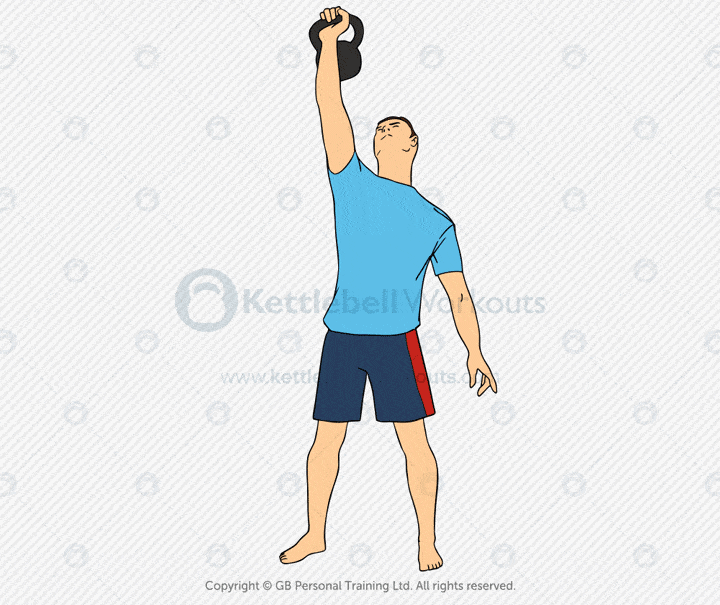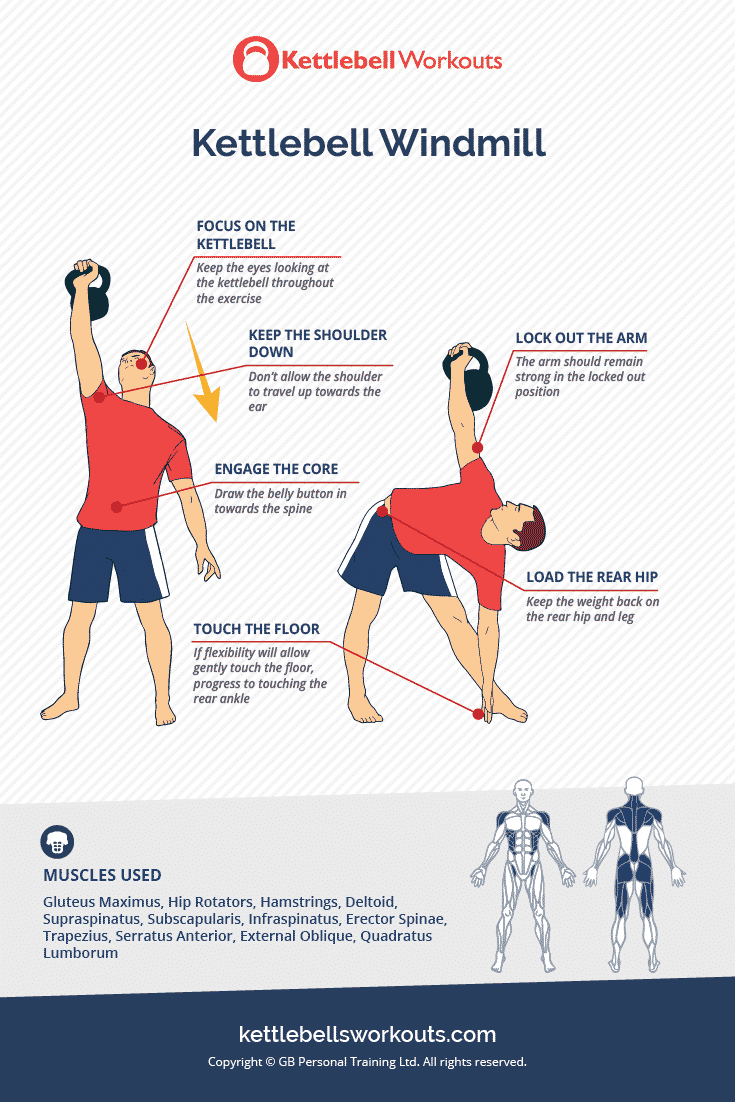Last Updated on 29 July 2025 by Greg Brookes

The kettlebell overhead walking lunge takes the classic overhead lunge and turns up the difficulty by adding forward motion.
This means more instability, greater demand on the core and shoulders, and a serious test of coordination and mobility.
In this guide, I’ll show you how to perform the kettlebell overhead walking lunge correctly, what makes it so effective, and how to build up to it safely.
What Is the Kettlebell Overhead Walking Lunge?
It’s a dynamic lunge exercise performed while holding a kettlebell locked out overhead with one arm. As you walk forward, you alternate legs while maintaining overhead stability.
The movement challenges your shoulders, core, and lower body all at once, and exposes any gaps in mobility or control.
Why It Matters
Unlike static overhead movements, walking lunges introduce continual balance shifts. Your core and shoulder stabilisers must work overtime to keep you upright and aligned.
This is also a real-world strength movement. Whether you’re lifting overhead in sport or life, being able to control a load while moving is essential.
Training this movement not only builds stability but also improves posture, thoracic extension, and proprioception. It teaches your body to stabilise dynamically, a skill often missing in traditional gym training.
Muscles Worked
- Glutes
- Quadriceps
- Hamstrings
- Core stabilisers
- Deltoids
- Triceps
- Obliques
How to Do the Kettlebell Overhead Walking Lunge (Step-by-Step)
- Start with a kettlebell pressed and locked out overhead.
- Step forward into a lunge with your opposite leg.
- Keep your wrist straight, elbow locked, and arm in line with your ear.
- Lower under control until both knees are at roughly 90 degrees.
- Push off your front foot to bring your back leg forward.
- Repeat, switching arms at halfway if needed.
Tip: If you can’t maintain a locked-out arm, work on shoulder, triceps and thoracic mobility before progressing.
Watch the kettlebell overhead walking lunge in action:
Common Mistakes to Avoid
- Letting the elbow bend or wrist collapse
- Arching the lower back
- Rushing steps without control
- Allowing the kettlebell to drift forward or out to the side
- Not engaging the glute of the rear leg, leading to instability
Warm-Up Drills to Prep for the Movement
Prep your body with these drills:
- Shoulder Dislocates (10 reps)
- Kettlebell Arm Bar (5 reps per side)
- Bodyweight Lunges (10 per side)
- Turkish Get Up to elbow (3 per side)
- Overhead Hold March in Place (30 seconds per side)

Programming Tips and Reps
- Start with 10–20 total steps (5–10 per side)
- Switch arms at halfway
- Perform 2 to 3 sets
- Use it as a finisher, mobility-conditioning hybrid, or paired with core stability work
Coach’s Insight: Greg’s Take
I don’t add this exercise for everyone. But if you’ve nailed the Turkish Get Up and have decent thoracic mobility, it’s one of the best ways to test real-world strength.
Start light, keep the tempo slow, and expect to be humbled by how much control it demands.
Kettlebell Overhead Walking Lunge vs Regular Lunge
Regular lunges focus mostly on the legs and hips. Add overhead loading, and suddenly it becomes a full-body test, especially for your posture and shoulder endurance.
If you’ve nailed the Turkish Get Up and Windmill, this movement is your next logical step.
The overhead component creates an anti-extension challenge through the core and requires stability from head to toe with every step.

Who Should Do This Exercise?
- Intermediate to advanced lifters
- Athletes needing cross-body stability
- Anyone working on postural correction
- Clients progressing from static overhead work
If you’re early in your kettlebell journey, build a foundation with goblet lunges, racked reverse lunges, and overhead holds before jumping in.
Related Exercises You Can Try Next
Want More Smart Kettlebell Training?
If you’re serious about building strength that moves with you, explore more of my in-depth kettlebell tutorials.
Every guide is built to help you train better, stay injury-free, and move like an athlete.
Develop coordination and core stability. Discover all kettlebell exercises to train smarter.
Frequently Asked Questions
It combines mobility, stability, strength, and coordination. It demands shoulder control and total-body alignment.
No. Start lighter—overhead loading is far more demanding.
You should be confident with the Turkish Get Up and overhead holds. If not, master those first.
Yes. Done for reps or distance, this movement taxes your lungs, core, and legs all at once.




Comments